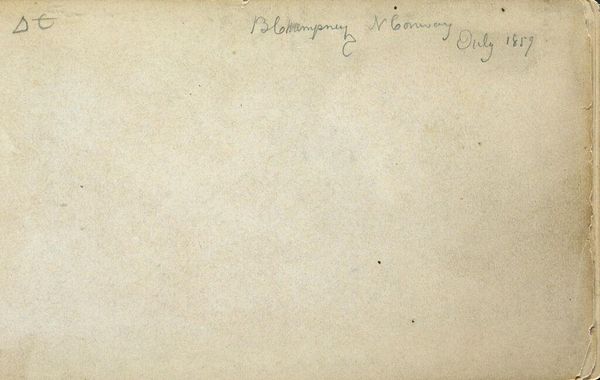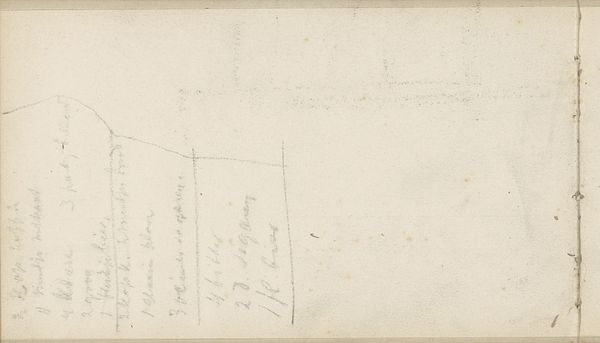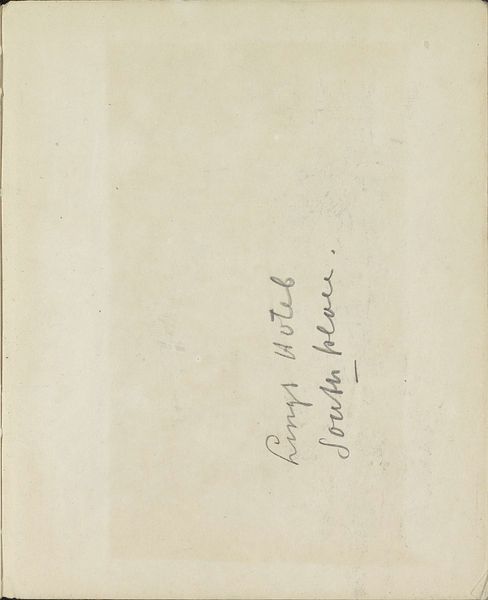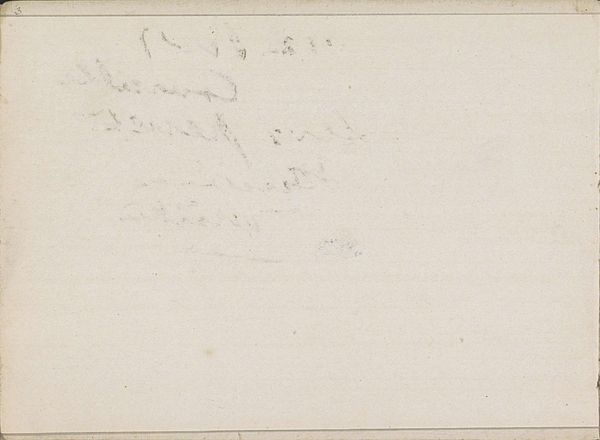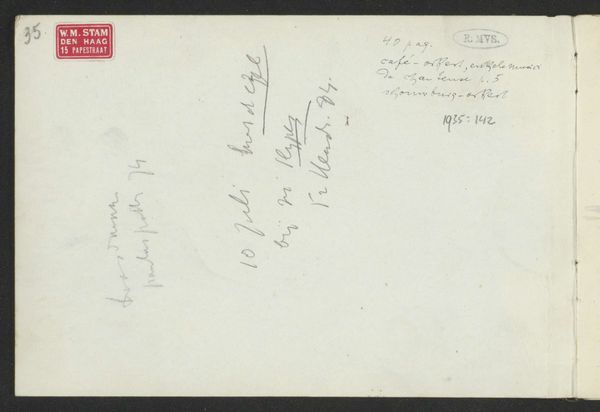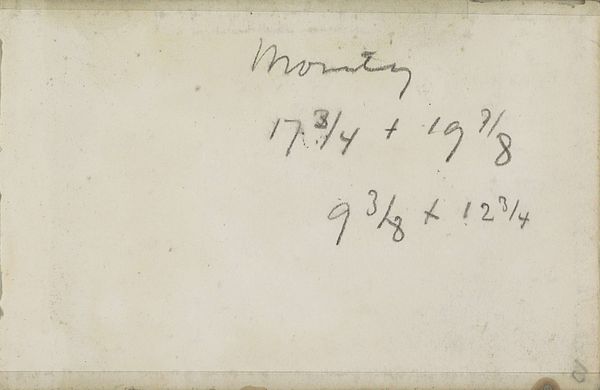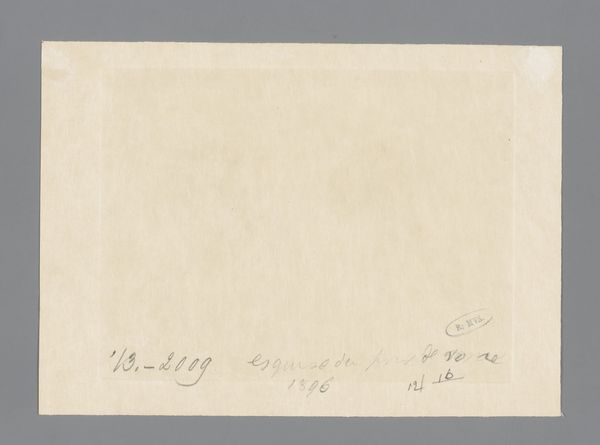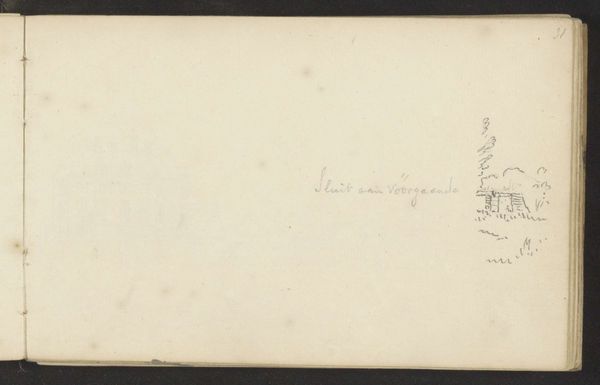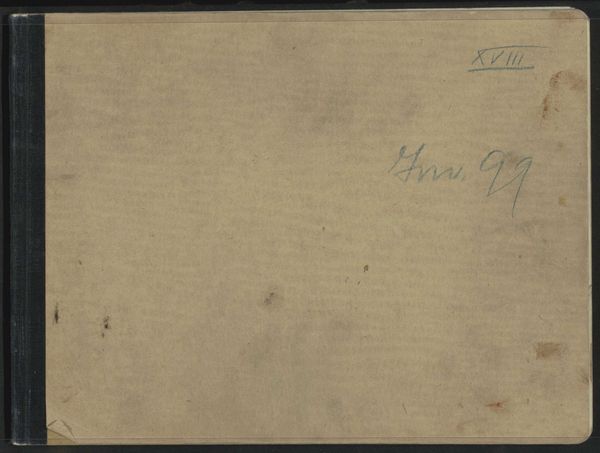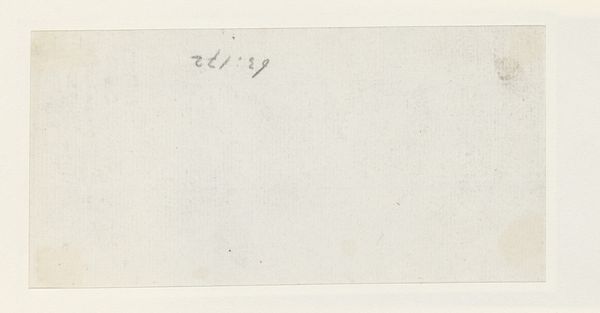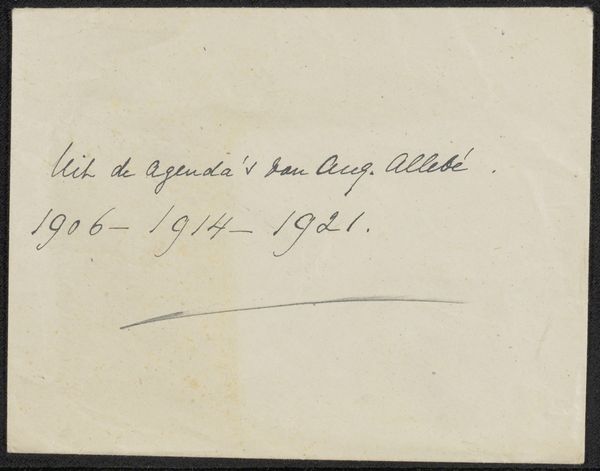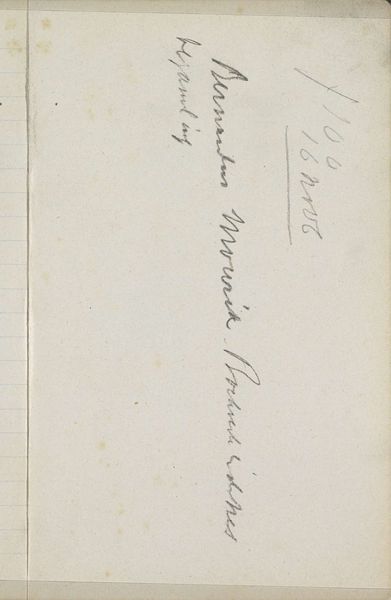
#
script typography
#
hand-lettering
#
sketch book
#
hand drawn type
#
hand lettering
#
personal sketchbook
#
hand-drawn typeface
#
sketchbook drawing
#
sketchbook art
#
small lettering
Copyright: Rijks Museum: Open Domain
Curator: Here we have “Annotaties,” or "Annotations," a work by Isaac Israels dating from 1875 to 1934. It's part of the collection here at the Rijksmuseum. What are your first thoughts on this piece? Editor: The delicate hand-lettering jumps out. It feels like a quiet, personal inscription, more a note to oneself than something intended for public view. I’m immediately curious about the kind of ink or pencil he used—what material gives it that subtle, almost faded quality? Curator: Considering Israels's background, moving in circles that promoted modernism in Amsterdam and influenced by Impressionism in Paris and London, it's intriguing to see him working in this way. The act of sketching typography seems a rather deliberate move away from traditional notions of painting displayed in salons and institutions. Editor: Precisely. It reminds us that so much artistic labour goes unseen, happening in studios and sketchbooks, away from formal exhibition spaces. Were these annotations intended to be preparatory studies? Were they material explorations in their own right, with a tangible function outside of being high art? The tension interests me. Curator: It's easy to forget the sheer volume of 'invisible' artistic work when we're confronted by completed masterpieces. Think of the societal context! Isaac Israels had an aristocratic upbringing. Reflecting upon the era of Israels gives context to these informal experiments as private pursuits permitted by privileged circumstance. Editor: That contrast of context makes it all the more compelling. These “Annotations”, scribbled in what looks like pencil on simple paper, seem at once fleeting and important. They are intimate and personal yet could later form the basis of larger societal narratives and more monumental works. They are the physical remnants of the daily artistic process that led to those stories being created. Curator: Absolutely. The work also speaks to the burgeoning accessibility of art materials during that period, and how this changed not just art creation, but, moreover, the business behind it. Israels lived through huge societal shifts, which saw him reflect on old modes of artistry to new markets, a radical disruption to older forms of commissioning work that had, until recently, governed artists and patrons for centuries. Editor: Thanks to works such as this one we get to have those perspectives. For me, “Annotaties” encourages one to appreciate both process and finished result as well as everything in-between. Curator: Yes, it definitely humanizes him. A peek into the thoughts of an acclaimed painter who, for the better part of his life, stood in contrast to previous systems in favor of creating one's own business, while at the same time engaging directly with it.
Comments
No comments
Be the first to comment and join the conversation on the ultimate creative platform.
